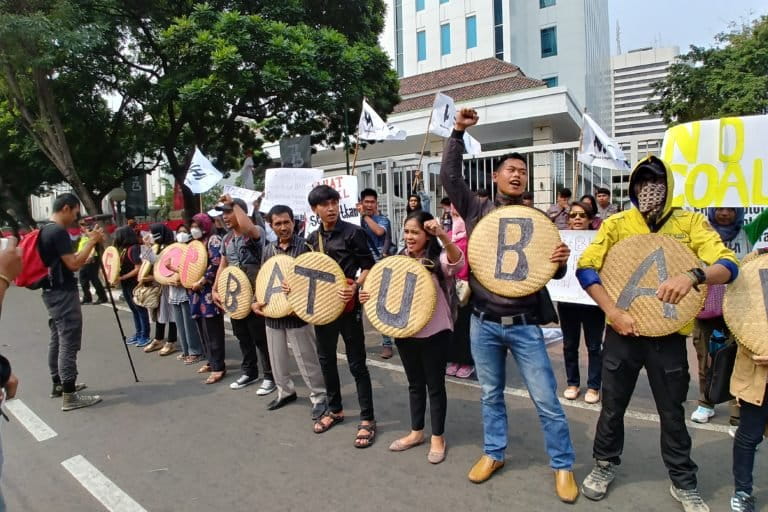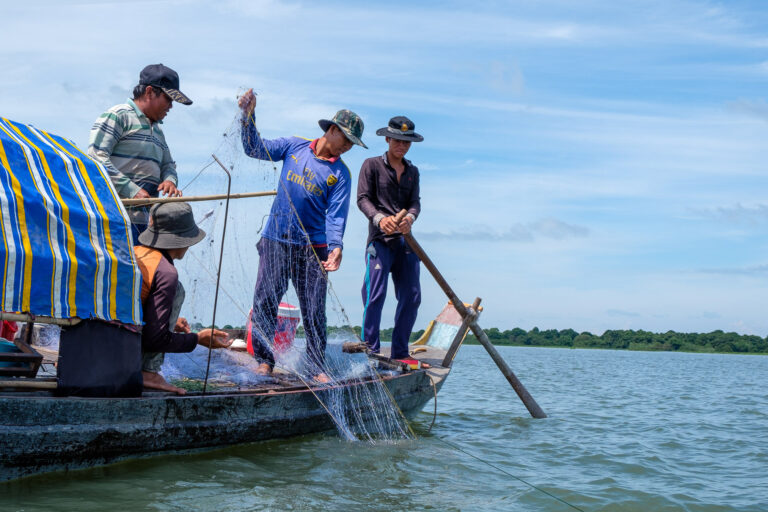
Endangered environmentalists
Green groups under threat from governments and corporate actors: As climate change, pollution, and habitat destruction worsen across the globe, environmental groups are responding by ratcheting up the pressure on governments and corporations to act. Many governments have responded by increasing restrictions on environmental NGOs, including revoking charity status, increasing sentences for protestors, and passing legislation restricting NGO activity.


Vietnamese environmentalist sentenced to 3 years in prison for tax evasion

Son of slain Quilombola leader will still strive for community’s rights

Video: Five Tembé Indigenous activists shot in Amazonian ‘palm oil war’

Indigenous activists demand justice after 5 shot in Amazonian ‘palm oil war’

Climate of fear persists among Nepal’s eco defenders as threats rise
Global forest reporting network

A new 100-page report raises alarm over Chevron’s impact on planet

Science refutes United Cacao’s claim it didn’t deforest Peruvian Amazon

‘We are invisible’: Brazilian Cerrado quilombos fight for land and lives

Chimps in Sierra Leone adapt to human-impacted habitats, but threats remain

Cocaine blamed for rising deforestation in Peru’s Bahuaja-Sonene National Park

Devastating Laos dam collapse leads to deforestation of protected forests
Indonesian coal

Biomass-burning coal plants leave the air even dirtier, Java communities say

Indonesians uprooted by mining industry call for a fairer future amid presidential vote

Experts see red over Indonesia’s planned green investment label for coal plants

Indonesian voters want a clean energy plan, but candidates haven’t delivered

Report: Forest-razing biomass plant in Indonesia got millions in green funds

U.S. firm quits Indonesian gasification project in major blow to coal ambitions
Southeast asian infrastructure
Focusing on the social and environmental impacts of roads, dams, mines, and other infrastructure projects in Indonesia, Malaysia, and Papua New Guinea.

Study: Indonesia’s new capital city threatens stable proboscis monkey population

Indonesia’s new capital ‘won’t sacrifice the environment’: Q&A with Nusantara’s Myrna Asnawati Safitri

Small farmers in limbo as Cambodia wavers on Tonle Sap conservation rules

To build its ‘green’ capital city, Indonesia runs a road through a biodiverse forest

Robust river governance key to restoring Mekong River vitality in face of dams

As hydropower dams quell the Mekong’s life force, what are the costs?
Amazon infrastructure

Mouth of the Amazon oil exploration clashes with Lula’s climate promises

Electricity day and night: Solar power is changing isolated Amazon communities

Road network spreads ‘arteries of destruction’ across 41% of Brazilian Amazon

‘Lost’ Amazonian cities hint at how to build urban landscapes without harming nature

Making room in the Atlantic Forest for the largest primate in the Americas

New transport infrastructure is opening the Amazon to global commerce
Asian rhinos

New calf, same threats: Javan rhinos continue to reproduce despite perils

Nepali experts question rhino relocation within park for population balance

To help beleaguered Javan rhinos, study calls for tree felling, captive breeding

New calf brings new hope, and new concerns, for embattled Sumatran rhinos

Boost for Sumatran rhino IVF plan as eggs extracted from Bornean specimen

Indonesia reports a new Javan rhino calf, but population doubts persist
Indonesian fisheries

In Java Sea, vigilantism and poverty rise as purse seine fishing continues

Putting a value on Indonesia’s marine resources: Interview with Annisya Rosdiana & Heidi Retnoningtyas

Tropical forest loss puts 2030 zero-deforestation target further out of reach

Indonesian court jails environmentalist for flagging illegal farms in marine park

Indonesian activists face jail over FB posts flagging damage to marine park

In Raja Ampat, pearl farming balances business and ecological sustainability
Global environmental impacts of u s policy

President Biden signs order aimed at protecting old-growth forests across U.S.

FOREST Act bill would hold global suppliers accountable for illegal deforestation

As the rest of world tackles plastics disposal, the U.S. resists

As climate chaos escalates in Indian Country, feds abandon tribes

COP24: Trumpers tout clean coal; protesters call it ‘climate suicide’

COP24: US, Russia, Saudis downplay IPCC report in display of disunity
Conservation in madagascar
Madagascar has been a global conservation priority for decades, receiving hundreds of millions of dollars in conservation funds from international donors, but rising deforestation, commercial exploitation of wildlife, and degradation of critical habitats suggest that conservation investments may not be reaching their full potential. This series investigates the effectiveness of past conservation spending in Madagascar, examining the factors that contribute to or hinder success, with the aim of informing future investments.

Newly described gecko from Madagascar a master of disguise

Fire imperils Madagascar’s baobabs: Q&A with park director Diamondra Andriambololona

Extreme reforestation: Baobab planters confront fires, loggers, cattle and more

Eight new-to-science geckos described from biodiversity haven Madagascar

Rio Tinto-owned mine is polluting Malagasy water with uranium and lead, NGOs say

Even as the government bets big on carbon, REDD+ flounders in Madagascar
Conservation effectiveness

The conservation sector must communicate better (commentary)

Thailand tries nature-based water management to adapt to climate change

Forest restoration to boost biomass doesn’t have to sacrifice tree diversity

How scientists and a community are bringing a Bornean river corridor back to life

Forest restoration can fare better with human helping hand, study shows

From rat-ridden to reserve, Redonda is an island restoration role model
Global agroforestry
An ancient agricultural system, agroforestry combines trees with shrubs, crops, and livestock in a system that produces food, supports biodiversity, builds soil horizons and water tables, and sequesters carbon from the atmosphere – this series explores how and where it is being practiced by Indigenous communities, traditional agriculturists, and new farmers.

‘Another catastrophe’: Flooding destroys Indigenous agroforestry projects in Peru’s Amazon

New U.S. agroforestry project will pay farmers to expand ‘climate-smart’ acres

Breadfruit’s low carbon storage could be offset by fast growth, study finds

Nile Basin farmers grow food forests to restore wetlands and bring back a turtle

Indigenous Zenú turn to ancestral seeds, agroecology to climate-proof their farming

Sumatra coffee farmers brew natural fertilizer as inflation bites
Global forests

Conservationists welcome new PNG Protected Areas Act — but questions remain

A tiger cat gains new species designation, but conservation challenges remain

Tropical forest loss puts 2030 zero-deforestation target further out of reach

Are biodiversity credits just another business-as-usual finance scheme?

UN probes controversial forest carbon agreement in Malaysian Borneo

In Cambodia, an official’s cashew factory churns out timber from a protected forest
Almost famous animals

On the trail of Borneo’s bay cat, one of the world’s most mysterious felines

A tiger cat gains new species designation, but conservation challenges remain

Shining a spotlight on the wide-roaming sand cat ‘king of the desert’

Meet Japan’s Iriomote and Tsushima cats: Ambassadors for island conservation

Return of the wolf to Nepal’s Himalayas may threaten snow leopards











































































